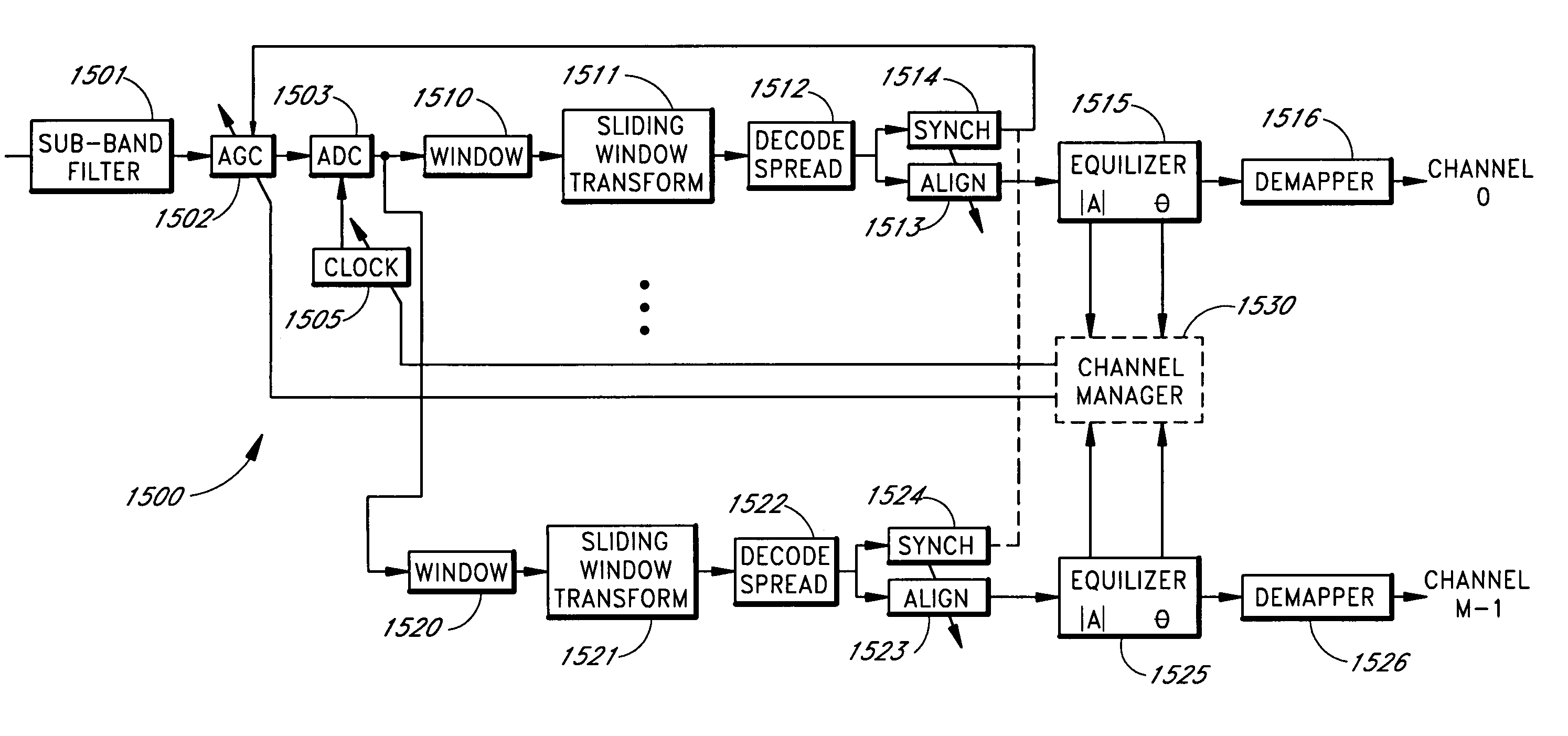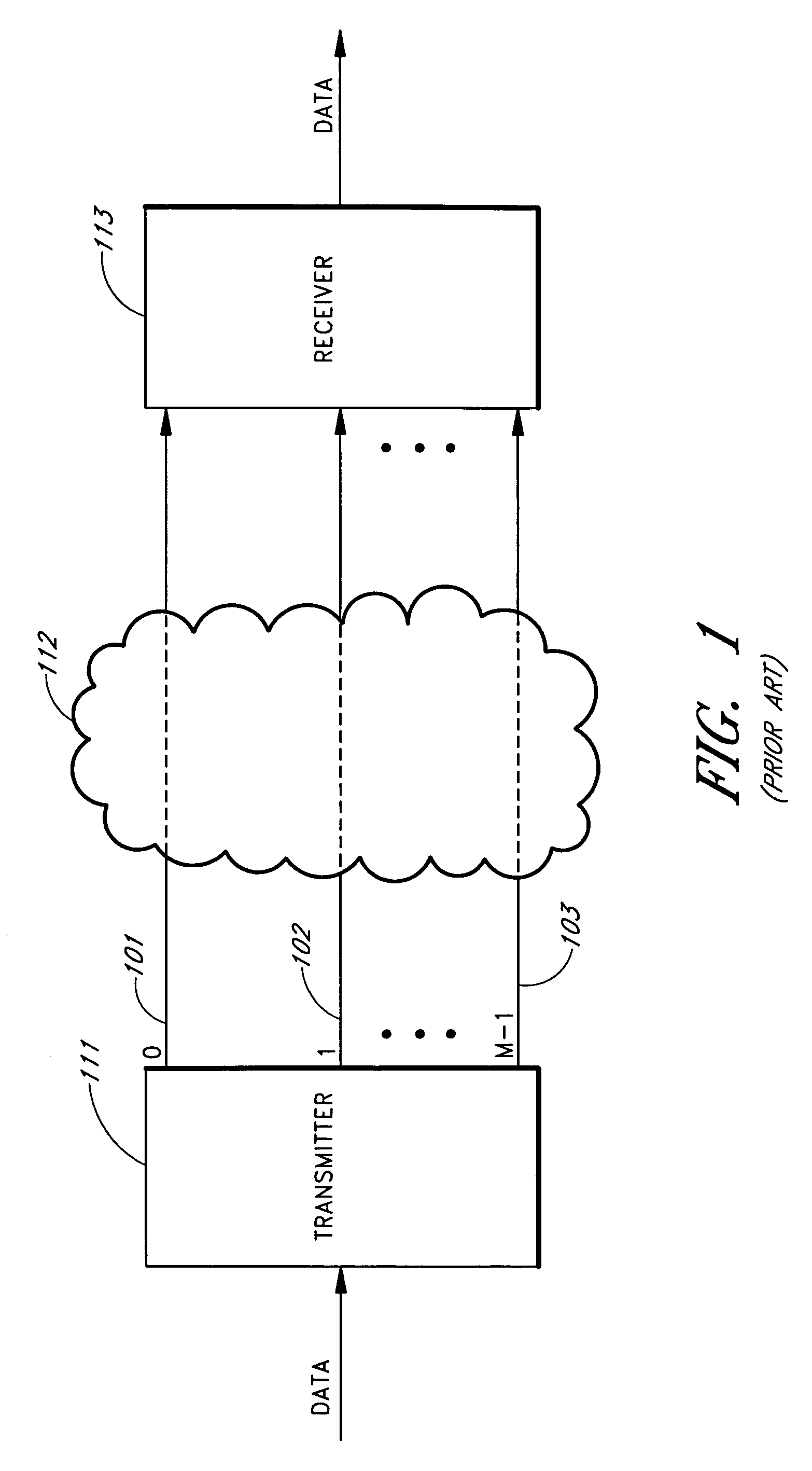Sliding-window multi-carrier frequency division multiplexing system
a multi-carrier, sliding window technology, applied in multiplex communication, orthogonal multiplex, pulse technique, etc., can solve the problems of carrier frequency shift, loss of signal path, hostile transmission environment of desired communication signal, etc., to achieve the effect of improving performan
- Summary
- Abstract
- Description
- Claims
- Application Information
AI Technical Summary
Benefits of technology
Problems solved by technology
Method used
Image
Examples
Embodiment Construction
[0073]For the sake of clarity in the following disclosure, a distinction is made between sub-carriers and sub-channels when dealing with sinusoidal basis functions. Generally, a sub-channel is a frequency bandwidth allocated for the transfer of the modulated signals. The carrier frequency is usually the carrier frequency of the sinusoidal signal used to modulate a baseband signal into the bandwidth of the sub-channel. The sub-carrier is the sinusoidal signal.
[0074]FIG. 1 is a block diagram showing a multi-channel medium 112 connecting a multi-channel transmitter 111 to a multi-channel receiver 113. The multi-channel medium 112 is configured to provide m separate data channels 101–103 shown as a first channel 101, a second channel 102, and an M-th channel 103. The multi-channel transmitter 111 provides a separate data output to each channel 101–103 and each of the multi-channels 101–103 is provided to a separate data input of the multi-channel receiver 113. In one embodiment, the mul...
PUM
 Login to View More
Login to View More Abstract
Description
Claims
Application Information
 Login to View More
Login to View More - R&D
- Intellectual Property
- Life Sciences
- Materials
- Tech Scout
- Unparalleled Data Quality
- Higher Quality Content
- 60% Fewer Hallucinations
Browse by: Latest US Patents, China's latest patents, Technical Efficacy Thesaurus, Application Domain, Technology Topic, Popular Technical Reports.
© 2025 PatSnap. All rights reserved.Legal|Privacy policy|Modern Slavery Act Transparency Statement|Sitemap|About US| Contact US: help@patsnap.com



